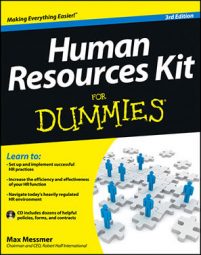A growing number of consulting companies and individuals specialize in helping clients identify the training needs of their employees. If your company is large enough, and you don’t have the time or resources to engage in this process yourself, it may well be in your best interest to hire one of these outside sources. If you do decide to manage this process yourself, consider exploring the following needs-assessment options.
Employee focus groups
Generally used in larger firms, employee focus groups often represent the ideal first step in a needs-assessment process. You pull together a group of employees from various departments or levels of your organization. If time permits, you spend a day or two (possibly off-site) discussing as a group what your company needs to do to achieve its strategic goals and what skills are required to meet this challenge.
If this time commitment isn’t plausible, even a two- to three-hour session in a conference room at your company’s offices can be illuminating.
No matter how much time you’re able to take, two key factors ensure that this process is productive:
The makeup of the group: The group should include representatives from a wide cross-section of departments and experience levels, as well as managers and staff-level employees.
The ability of the facilitator: The facilitator can be you or someone else, but he needs to promote open discussion and keep the focus group from disintegrating into a gripe session.
Surveys and questionnaires to get employee input
Surveys and questionnaires are standard tools in the needs-assessment process. Depending on the size of your company, surveys may represent the most cost-effective approach to needs assessment.
In a typical needs-assessment questionnaire, employees are given a list of statements or open-ended and close-ended questions that focus on a specific skill. They’re invited to indicate whether they think improvements in that area will enhance their ability to perform their jobs or advance in the company.
If you survey employees in this way, gathering feedback from supervisors is also a good idea. Each group may offer a unique perspective. Yet another way of enhancing the utility of questionnaires is to get some survey feedback from customers.
Observation of employees doing the job
Simply observing how employees are performing on the job and taking note of the problems they’re experiencing can often give you insight into their training needs.
Here again, you should be careful about the conclusions you draw. It’s tempting when observing employees who are struggling with some aspect of their jobs to attribute the difficulty to a single cause — some problem that you can solve by scheduling a training program or by sending them to a seminar. This assumption is dangerous.
If you were to notice, for example, that your customer service reps aren’t as courteous to customers as you would like, you may assume that what they need is training in phone skills. Phone training may indeed be called for, but other factors may be involved as well, such as inappropriate pressures from supervisors that are contributing to the negative behavior.
One way to avoid the common pitfall of jumping to conclusions is to speak directly with the employees you’ve observed and give them the opportunity to explain why their performance may be falling short.

